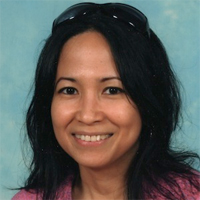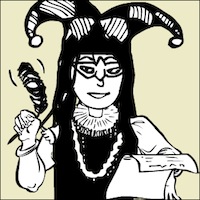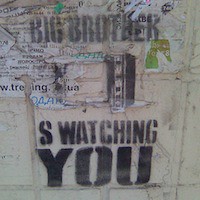Toni Morrison, Nobel Laureate (February 18, 1931)

The Nobel Prize for Literature has gone to many great poets and authors. The prize began its history in 1901 with the first receiver for literature being Sully Prudhomme. Since then, the prize has gone to such names as Theodor Mommsen (1902), Rudyard Kipling (1907), William Butler Yeats (1923), George Bernard Shaw (1924), Sinclair Lewis (1930), Herman Hesse (1946), T.S. Eliot (1948), Winston Churchill (1953), Earnest Hemmingway (1954), and John Steinbeck (1962).1 The list is very extensive, but consists mostly of males; non-black males, at that. In 1938, the first female was awarded the Nobel Prize for Literature and that woman was Pearl S. Buck. It would be another 55 years before history would once again be made by the presentation of the Nobel Prize to an African American Woman.
Chloe Anthony Woffard came into the world February 18, 1931. The second of four children, Chloe’s family made sure to give each other what they deserved—respect. Mr. Woffard worked three jobs for 17 years and was very proud of his work. He made sure to always dress well, even during the Depression. Her mother made sure the children went to church and, in the evenings, told them stories about their ancestors and other stories from Southern black folklore.
Another thing that the Woffards apparently did for Chloe was teach her to read. When she entered the first grade at her integrated Lorain, Ohio school, she was the only black child—and the only one who could read. She never encountered discrimination until she began dating—which, for the time, was quite impressive. Some of her favorite authors in high school were Tolstoy, Dostoyevski, Flaubert, and Austen. She graduated in 1949, with honors.
After high school, she went to Howard University in Washington, D.C., and majored in English with a minor in classics. In college, she began using a different name. The name “Chloe,†it seemed, was difficult to pronounce. So, she started going by a shortened form of her middle name—Toni. She also joined a repertory company called the Howard University Players. With this group, she made many tours of the South, seeing first-hand what life was like for the Southern blacks. It was then she truly realized what her parents had escaped by moving to the North. She graduated with a Bachelor’s of Arts degree in 1953, then entered Cornell University for her Master’s work, graduating in 1955.
She met and fell in love with Harold Morrison, a Jamacian architect. The pair were married in 1958. Toni taught at Texas Southern University where she first began to think upon the idea of Black History as a discipline rather than family stories. At Howard, black history was overlook and shoved off to the side. At Texas Southern University, there was a whole week dedicated to “Negro History.†When she joined the faculty at Howard, she brought more than just English Classics to the table. The country was in the throes of change with the Civil Rights movement. She met such people as LeRoi Jones (aka Amiri Baraka) and Andrew Young and taught such names as Stokely Carmichael and Claude Brown.
Her marriage to Howard was not the happiest. To escape the woes and trials of her marriage, she joined a writing group. The group would meet weekly and they required their members to bring a poem or a story each week. One week, she had nothing to bring; she quickly jotted down a story about a girl she knew when she was young who always prayed to God for blue eyes.2 After the meeting, she put the story away and thought nothing more of it.
After she divorced her husband, she took her two boys with her to live with her family in Loraine, OH. In 1964, she landed a job as an associate editor with Random House in Syracuse. She hoped to be transferred to New York City in a short amount of time. While she worked, the housekeeper took care of her boys. When she came home, she’d cook dinner and play with them til their bed time. After the boys went to bed, Toni would write.
She pulled out her story from the writer’s group and decided to craft it into a novel. Recalling the past events and inviting her imagination to take over, she began to weave a wonderful tale about a little girl who prayed for blue eyes. The characters took on lives of their own and Toni began to feel the excitement and challenge of writing. The only other thing in life that brought any kind of excitement and challenge was parenting.
In 1967, she received her transfer to New York City and became a senior editor. While editing books by Mohammad Ali, Andrew Young, and Angela Davis, Toni sent her own novel, The Bluest Eyes to different publishers. Finally, one bit in 1970. The book was published and received critical acclaim. She took on an associate professorship at State University of New York from 1971-1972. She began work on her second novel, Sula, which was published in 1973. “It became an alternate selection by the Book-of-the-Month Club. Excerpts were published in the Redbook magazine and it was nominated for the 1975 National Book Award in fiction.â€3
Toni Morrison continued to work for Random House until 1983. She then left Random House and became the “Albert Schweitzer Professor of the Humanities at the State University of New York in Albany.â€4 In 1987, her book Beloved was published; in 1988, she received the Pulitzer Prize for it.
In 1992, she published her novel Jazz; in 1993, Toni Morrison received the Nobel Prize—the eighth woman and first black woman to have the honor. Later, Morrison lamented changing her name: "I am really Chloe Anthony Wofford. That's who I am. I have been writing under this other person's name. I write some things now as Chloe Wofford, private things. I regret having called myself Toni Morrison when I published my first novel, The Bluest Eye.â€5
Whether her name is Toni Morrison or Chloe Anthony Wofford, her impact upon literature cannot be denied. Her impact on the African-American culture, also, cannot be denied. Her life seemed, to her, a series of mishaps, at the time, yet she made the choice to be positive and proactive. Her novel, Love, published in 2003, received harsh criticism for its rather political views. Morrison, however, had already addressed politics in art in an interview in 1974: "I don't believe any real artists have ever been non-political. They may have been insensitive to this particular plight or insensitive to that, but they were political because that's what an artist is – a politician."6
For more information on Toni Morrison, please view the following:
Toni Morrison
Distinguished Women
Wikipedia
VG/Voices from the Gaps
Chloe Anthony Woffard came into the world February 18, 1931. The second of four children, Chloe’s family made sure to give each other what they deserved—respect. Mr. Woffard worked three jobs for 17 years and was very proud of his work. He made sure to always dress well, even during the Depression. Her mother made sure the children went to church and, in the evenings, told them stories about their ancestors and other stories from Southern black folklore.
Another thing that the Woffards apparently did for Chloe was teach her to read. When she entered the first grade at her integrated Lorain, Ohio school, she was the only black child—and the only one who could read. She never encountered discrimination until she began dating—which, for the time, was quite impressive. Some of her favorite authors in high school were Tolstoy, Dostoyevski, Flaubert, and Austen. She graduated in 1949, with honors.
After high school, she went to Howard University in Washington, D.C., and majored in English with a minor in classics. In college, she began using a different name. The name “Chloe,†it seemed, was difficult to pronounce. So, she started going by a shortened form of her middle name—Toni. She also joined a repertory company called the Howard University Players. With this group, she made many tours of the South, seeing first-hand what life was like for the Southern blacks. It was then she truly realized what her parents had escaped by moving to the North. She graduated with a Bachelor’s of Arts degree in 1953, then entered Cornell University for her Master’s work, graduating in 1955.
She met and fell in love with Harold Morrison, a Jamacian architect. The pair were married in 1958. Toni taught at Texas Southern University where she first began to think upon the idea of Black History as a discipline rather than family stories. At Howard, black history was overlook and shoved off to the side. At Texas Southern University, there was a whole week dedicated to “Negro History.†When she joined the faculty at Howard, she brought more than just English Classics to the table. The country was in the throes of change with the Civil Rights movement. She met such people as LeRoi Jones (aka Amiri Baraka) and Andrew Young and taught such names as Stokely Carmichael and Claude Brown.
Her marriage to Howard was not the happiest. To escape the woes and trials of her marriage, she joined a writing group. The group would meet weekly and they required their members to bring a poem or a story each week. One week, she had nothing to bring; she quickly jotted down a story about a girl she knew when she was young who always prayed to God for blue eyes.2 After the meeting, she put the story away and thought nothing more of it.
After she divorced her husband, she took her two boys with her to live with her family in Loraine, OH. In 1964, she landed a job as an associate editor with Random House in Syracuse. She hoped to be transferred to New York City in a short amount of time. While she worked, the housekeeper took care of her boys. When she came home, she’d cook dinner and play with them til their bed time. After the boys went to bed, Toni would write.
She pulled out her story from the writer’s group and decided to craft it into a novel. Recalling the past events and inviting her imagination to take over, she began to weave a wonderful tale about a little girl who prayed for blue eyes. The characters took on lives of their own and Toni began to feel the excitement and challenge of writing. The only other thing in life that brought any kind of excitement and challenge was parenting.
In 1967, she received her transfer to New York City and became a senior editor. While editing books by Mohammad Ali, Andrew Young, and Angela Davis, Toni sent her own novel, The Bluest Eyes to different publishers. Finally, one bit in 1970. The book was published and received critical acclaim. She took on an associate professorship at State University of New York from 1971-1972. She began work on her second novel, Sula, which was published in 1973. “It became an alternate selection by the Book-of-the-Month Club. Excerpts were published in the Redbook magazine and it was nominated for the 1975 National Book Award in fiction.â€3
Toni Morrison continued to work for Random House until 1983. She then left Random House and became the “Albert Schweitzer Professor of the Humanities at the State University of New York in Albany.â€4 In 1987, her book Beloved was published; in 1988, she received the Pulitzer Prize for it.
In 1992, she published her novel Jazz; in 1993, Toni Morrison received the Nobel Prize—the eighth woman and first black woman to have the honor. Later, Morrison lamented changing her name: "I am really Chloe Anthony Wofford. That's who I am. I have been writing under this other person's name. I write some things now as Chloe Wofford, private things. I regret having called myself Toni Morrison when I published my first novel, The Bluest Eye.â€5
Whether her name is Toni Morrison or Chloe Anthony Wofford, her impact upon literature cannot be denied. Her impact on the African-American culture, also, cannot be denied. Her life seemed, to her, a series of mishaps, at the time, yet she made the choice to be positive and proactive. Her novel, Love, published in 2003, received harsh criticism for its rather political views. Morrison, however, had already addressed politics in art in an interview in 1974: "I don't believe any real artists have ever been non-political. They may have been insensitive to this particular plight or insensitive to that, but they were political because that's what an artist is – a politician."6
For more information on Toni Morrison, please view the following:
Toni Morrison
Distinguished Women
Wikipedia
VG/Voices from the Gaps
You Should Also Read:
First Black Space Walk (February 9, 1995)
Greensboro Sit-In (February 1, 1960)
I Have a Dream... (August 28, 1963)

Related Articles
Editor's Picks Articles
Top Ten Articles
Previous Features
Site Map
Content copyright © 2023 by Christa Mackey. All rights reserved.
This content was written by Christa Mackey. If you wish to use this content in any manner, you need written permission. Contact Lane Graciano for details.







